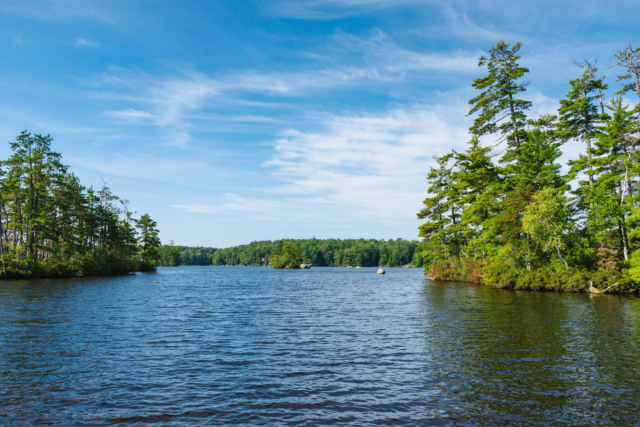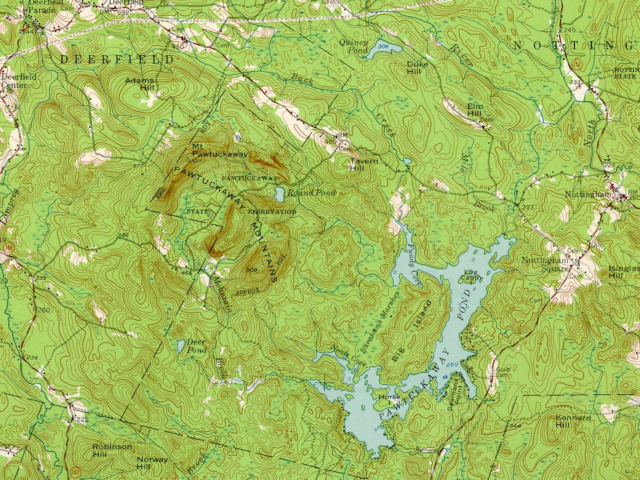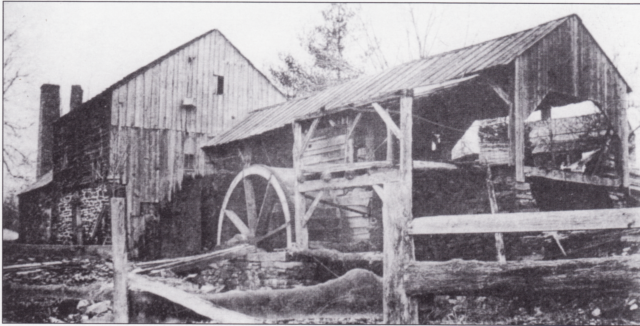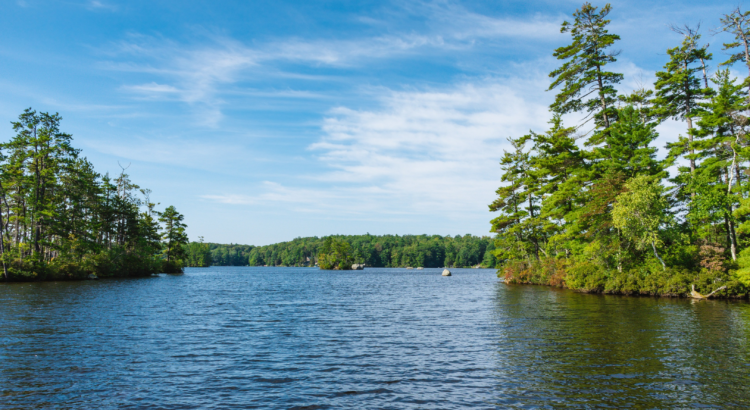Casey Devanney, SCA Interpretive Ranger
Pawtuckaway State Park is a 5,000-acre preserve in New Hampshire. It is one of the largest state parks in southeastern New Hampshire, named for Pawtuckaway Lake and the Pawtuckaway Mountains. The park extends from the west shore of the lake to the west side of the mountains.

Geology
The Pawtuckaway Mountains are a small, rocky, circular range that forms the outline of an ancient volcanic ring dike dating from 130 to 110 million years ago, in the Cretaceous Period. The ring dike, first wholly mapped in 1944, is a smaller and more accessible example of the same kind of geological process that formed the Ossipee Mountains to the north. The inner ring is roughly one mile in diameter, while the outer is measured at almost two miles.
Earthquakes occurred near the ring dike in the summer and fall of 1845. Known as the Deerfield explosions, they were described as subterranean noises “often as loud as the report of a 12-pounder cannon when heard at a distance of half a mile” but without echoes. They were the subject of much speculation at the time.

Recreation
The park has 32 miles of hiking trails. Trails lead to the approximately 900-foot summits of North and South Pawtuckaway mountains and connect the ring dike area to the lake. Other hiking trails lead to ponds, boulder fields, and views of the lake. The Pawtuckaway ring dike includes a boulder field of interest to bouldering climbers, and the park is a popular destination for geocaching.
The lake is a 783-acre water body with numerous islands and coves. It is a popular boating, fishing, and swimming destination. Since orienteering enthusiasts made an orienteering map of the park in 1992, the park has become a venue for major orienteering meets, including foot orienteering and canoe orienteering. The venue is shared by several orienteering clubs in New England, including Cambridge Sports Union, New England Orienteering Club, and Up North Orienteers.
Park amenities include 5 cabins, 195 campsites, a boat launch, a swimming beach, a camp store, a ball field, a playground, many bathhouses, shelters, picnic tables, and canoe, paddleboard, and kayak rentals.

History
The area was originally composed of many brooks, which collected in low spots and formed small ponds, such as what was then known as Pawtuckaway Pond. Some of the brooks that ran through the area eventually ran into the Pawtuckaway River. Both the North River and the Pawtuckaway River then ran into the Lamprey.
The construction of two colonial sawmills marked the beginning of enlarging the small ponds. On the north end, in 1729, a sawmill enlarged Pawtuckaway Pond. On the south end, in 1732, another sawmill enlarged Dolloff Pond.
Beginning in 1825, the Newmarket Manufacturing Company began to acquire land in the area for the construction of a reservoir to supply a consistent source of water power to its textile mill in nearby Newmarket, downstream from the lake. In 1836 two dams and several dikes were constructed that changed the features and character of the two ponds, causing their waters to merge except when the water levels were drawn down.
Eventually, steam power replaced water power, and gradually less water was drained from the lake to generate power. As water levels rose over time, Dolloff Pond and Pawtuckaway Pond merged into a single body of water. When the Newmarket Manufacturing Company fell on hard times in the early 1920s, it closed its mill in Newmarket. Its interests in the lake eventually passed into the hands of the New Hampshire Electric Company, which outfitted the dams with generators for hydroelectric power. Ultimately, the production of electricity became unprofitable, and in December 1955, NH Electric deeded the lake, its islands, its adjacent land, two dams, the dikes, and the water rights to the State of New Hampshire. In 1958 Dolloff Pond was officially considered merged into Pawtuckaway Pond, and the level of the pond is now managed for recreational and environmental uses.
Have you ever been to Pawtuckaway State Park? Whether it’s your first time visiting, or if you are a frequent visitor, you can now experience Pawtuckaway with a new perspective of the rich history of this area.


